This collection presents significant architectural works from different periods and continents. From medieval cathedrals to contemporary skyscrapers, the selection documents the technical and aesthetic development of building design. The listed buildings were created by influential architects and have shaped the evolution of modern architecture. The list includes religious structures such as Gothic churches and monasteries, public facilities like museums and concert halls, and residential buildings that established new construction standards. Each building demonstrates particular structural solutions or stylistic features that contribute to understanding architectural history. The selection offers insights into various building styles, materials and construction methods.

Bilbao, Spain
The Guggenheim Museum Bilbao opened in 1997 along the Nervión river and presents international contemporary artworks in a titanium building. Architect Frank Gehry designed the curved forms that extend across multiple levels. The collection includes works by artists from the 20th and 21st centuries, along with rotating exhibitions.
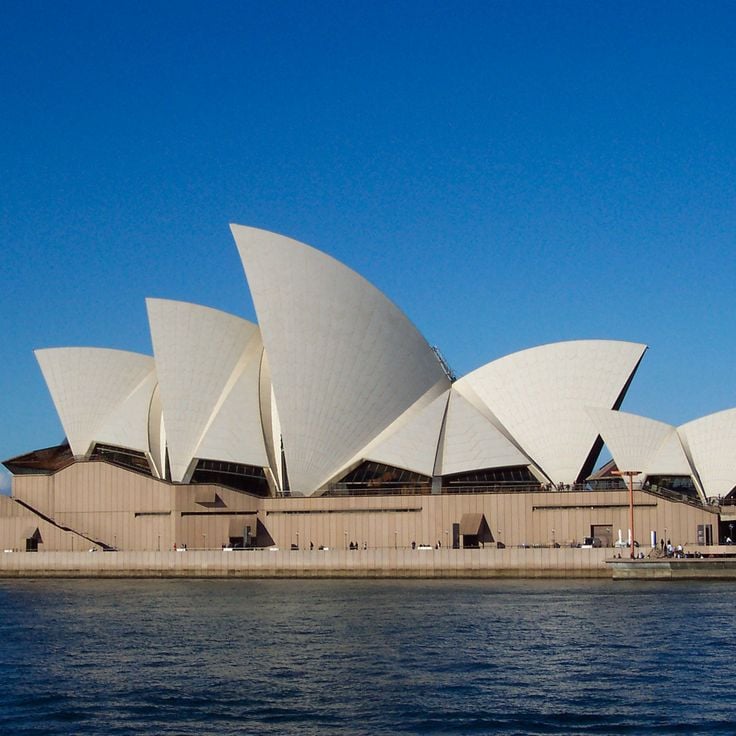
Sydney, Australia
The Sydney Opera House is a performing arts center with multiple venues located on Bennelong Point in Sydney Harbour. Designed by Danish architect Jørn Utzon, the building features distinctive white shell-shaped roof segments that have become a recognized symbol of Australia. Completed in 1973, the complex houses concert halls, theatres, and performance spaces for opera, ballet, and contemporary productions.
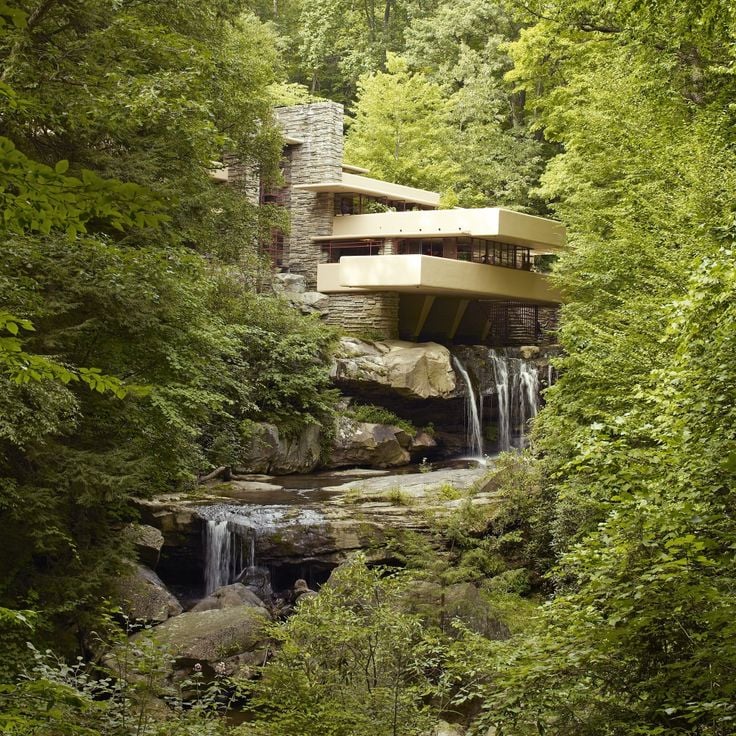
Pennsylvania, USA
Fallingwater House was designed by Frank Lloyd Wright in 1939 and sits directly above a waterfall in Mill Run. The construction features horizontal concrete plates that extend over the stream. The building incorporates natural rock formations into its interior spaces and connects architecture with the surrounding landscape. The residence served as a weekend home for the Kaufmann family and stands as a significant example of organic architecture from the 20th century.
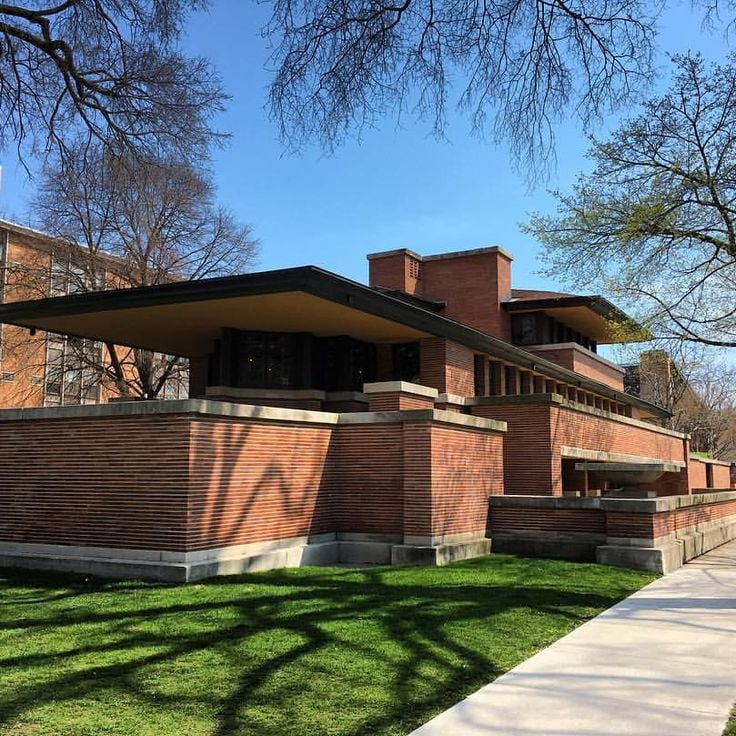
Chicago, USA
The Robie House was designed by Frank Lloyd Wright between 1909 and 1910 and represents one of the finest examples of Prairie School architecture in America. Located in the Hyde Park neighborhood, this residence features pronounced horizontal lines, cantilevered roofs extending far beyond the walls, and an integration of interior and exterior spaces. The construction employs Roman brick, steel beams, and extensive art glass windows that bring natural light into the open living areas.
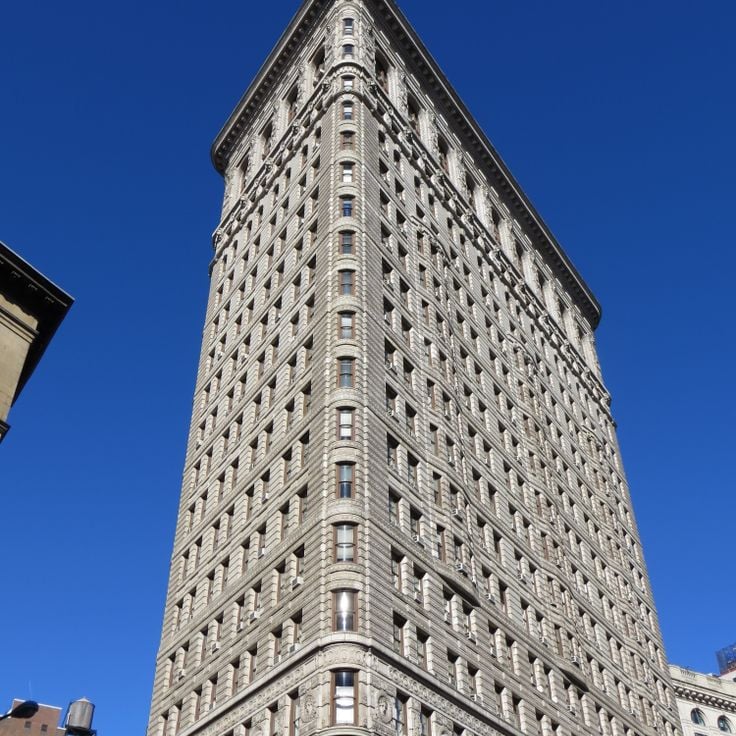
New York, United States
The Flatiron Building is a 285-foot steel-framed skyscraper designed by architect Daniel Burnham in 1902. This building rises at the intersection of Fifth Avenue and Broadway in the Manhattan district. Its triangular shape follows the wedge-shaped lot between the two streets. The facade features limestone and terracotta in the Beaux-Arts architectural style. At the time of its completion, it ranked among the tallest buildings in the city and represented an important development in modern skyscraper construction techniques.
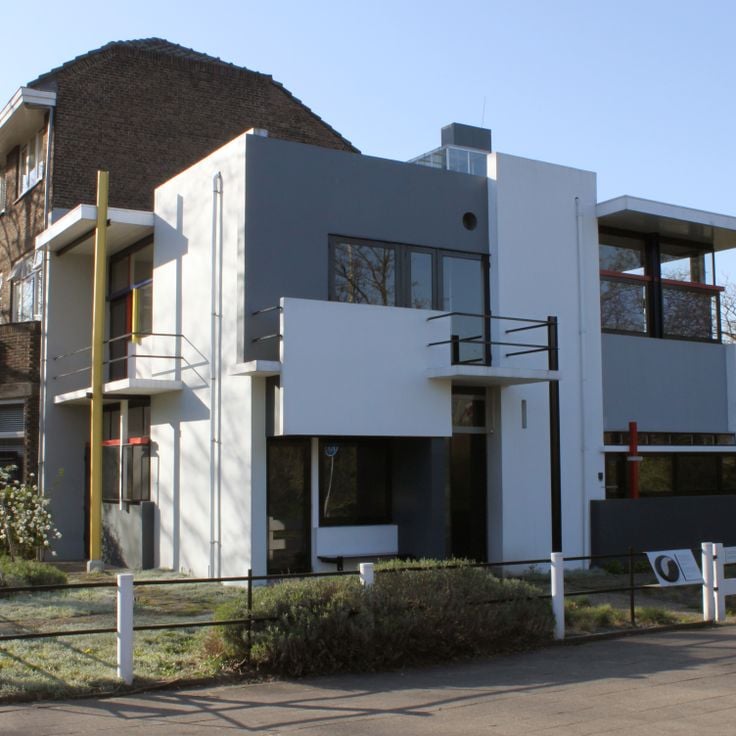
Utrecht, Netherlands
The Rietveld Schröder House was constructed in 1924 in Utrecht and represents a defining work of the Dutch De Stijl movement. Architect Gerrit Rietveld designed this residential building in close collaboration with his client Truus Schröder-Schräder. The facade displays geometric forms with right angles, horizontal and vertical lines, and the three primary colors red, yellow, and blue, complemented by white, gray, and black. The upper floor features movable walls that allow for flexible spatial division. The building has been inscribed on the UNESCO World Heritage List since 2000.
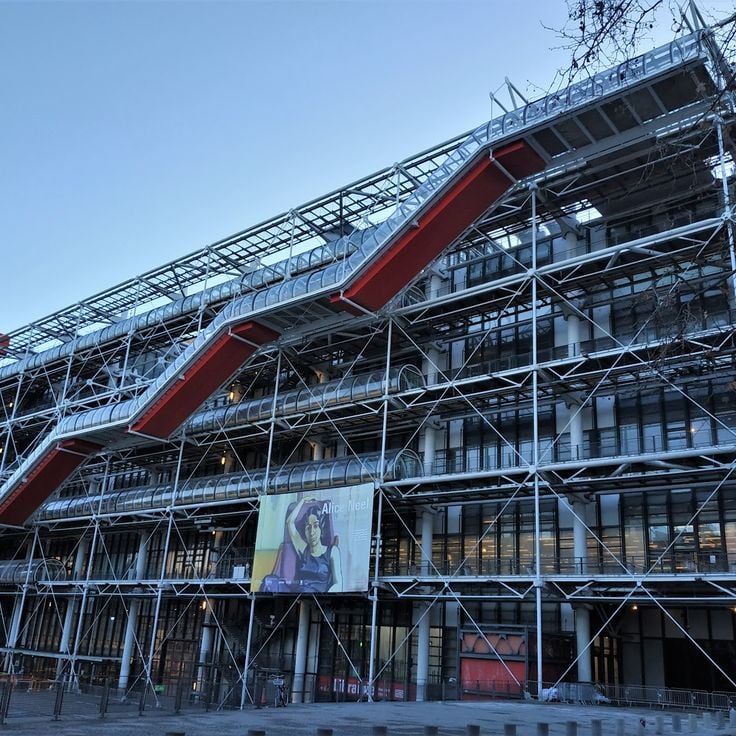
Paris, France
The Centre Pompidou opened in 1977 and presents its technical infrastructure on the exterior facade with color-coded utility pipes and escalators. The building houses a museum of modern art, a public library, and spaces for contemporary exhibitions. The externalized pipes in red, blue, yellow, and green indicate different functions such as heating, air conditioning, electricity, and water. The transparent escalators on the main facade allow visitors to view the historic Marais district during their ascent.
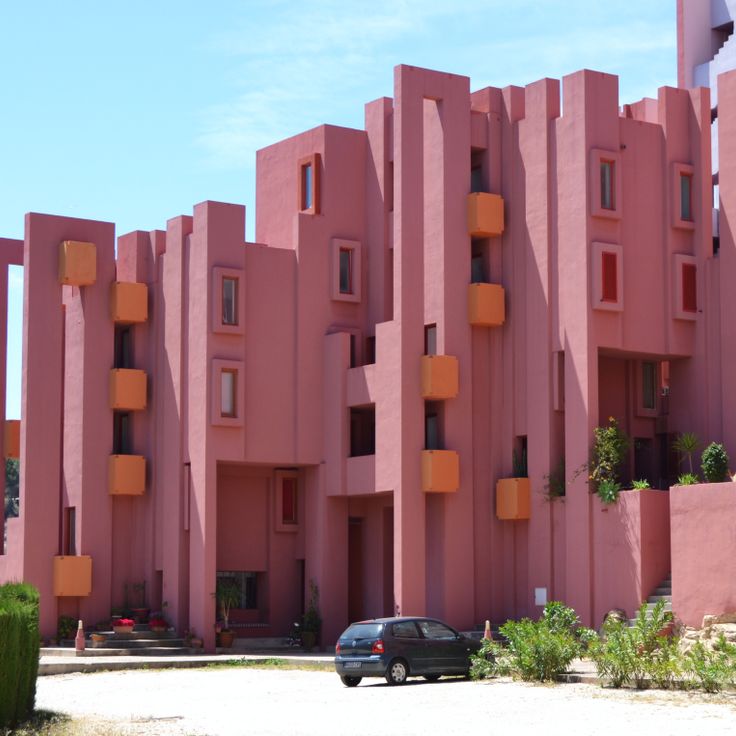
Valencia, Spain
La Muralla Roja is a residential complex in Valencia completed in 1973 by Catalan architect Ricardo Bofill. The building merges elements of Arabic kasbahs with Mediterranean architecture, featuring a distinctive geometric structure rendered in varying shades of red. The complex comprises several interconnected terrace levels linked by staircases, bridges, and interior courtyards. The characteristic red coloring contrasts with blue and violet accents in the interior spaces.
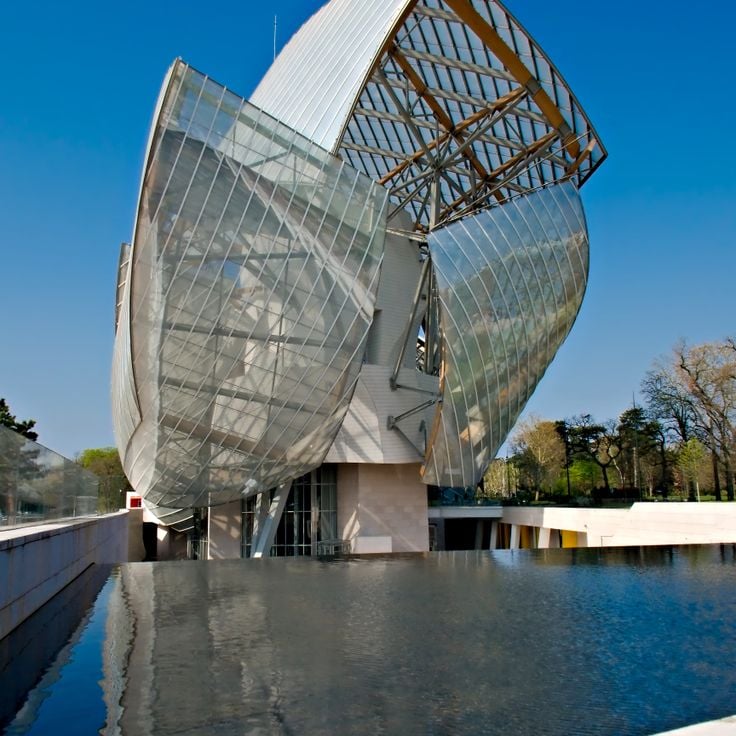
Paris, France
The Fondation Louis Vuitton opened in 2014 in the Bois de Boulogne and presents contemporary art in a building designed by architect Frank Gehry. The glass and steel construction features twelve curved sail-shaped panels and offers 11,000 square meters of exhibition space across four levels. This museum displays rotating exhibitions from the LVMH Group collection as well as international loans of modern and contemporary artists.
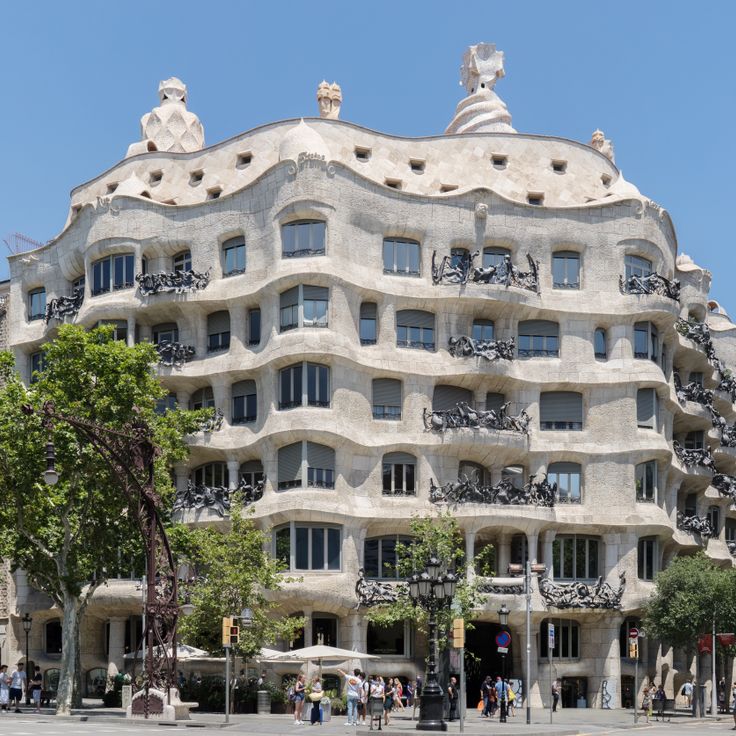
Barcelona, Spain
Casa Milà is a residential building in the Eixample district, constructed between 1906 and 1912 to designs by Antoni Gaudí. The undulating stone facade eliminates load-bearing walls through an innovative iron skeleton structure. The building contains six floors of apartments, an attic with catenary arches, and a rooftop terrace featuring sculptural chimneys. The top floor now houses a museum documenting Gaudí's architectural work. The construction was recognized as a UNESCO World Heritage Site in 1984.
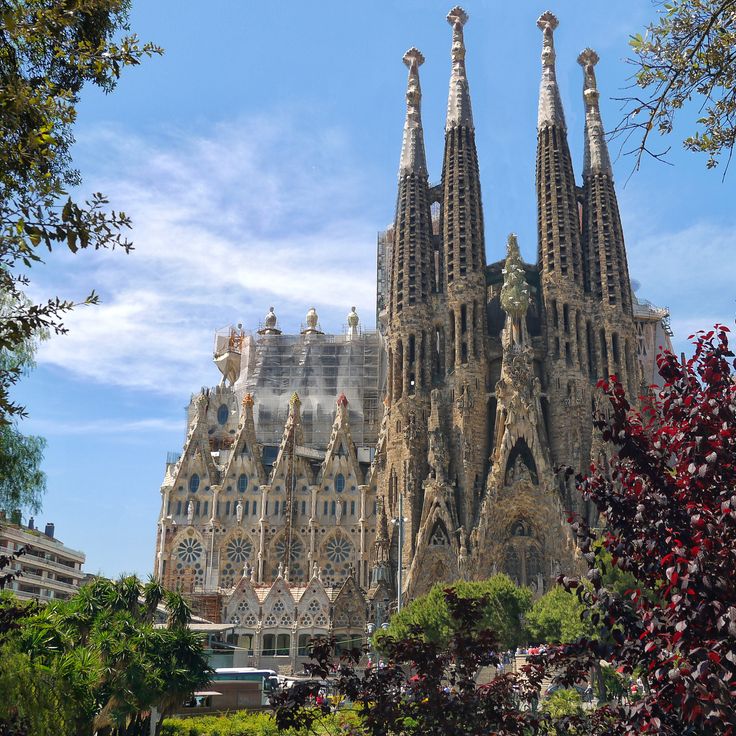
Barcelona, Spain
The Sagrada Familia is a Roman Catholic basilica whose construction began in 1882. Catalan architect Antoni Gaudí took over the project in 1883 and dedicated the final 43 years of his life to this work. The church combines Gothic elements with organic forms derived from nature. Gaudí developed an innovative structural system featuring inclined columns and hyperboloid vaults. Following his death in 1926, various architects have continued the work based on his plans and models.
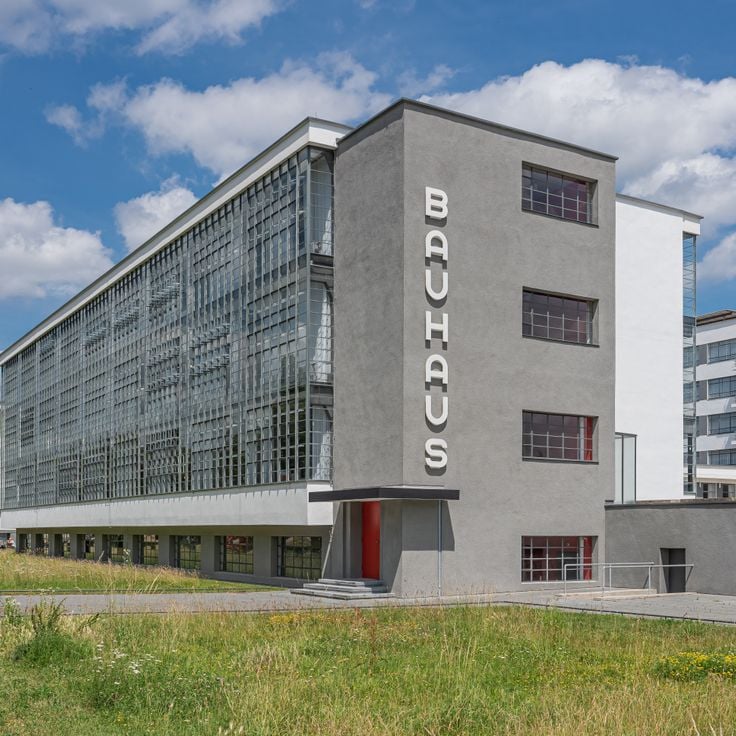
Dessau, Germany
The Bauhaus Dessau was completed in 1926 and serves as a significant example of modern architecture. This complex includes workshops, classrooms, a theater and student residences. The facade consists of glass and steel, demonstrating the functional principles of the Bauhaus school. The building was designed by Walter Gropius and combines teaching, production and living spaces under one roof.
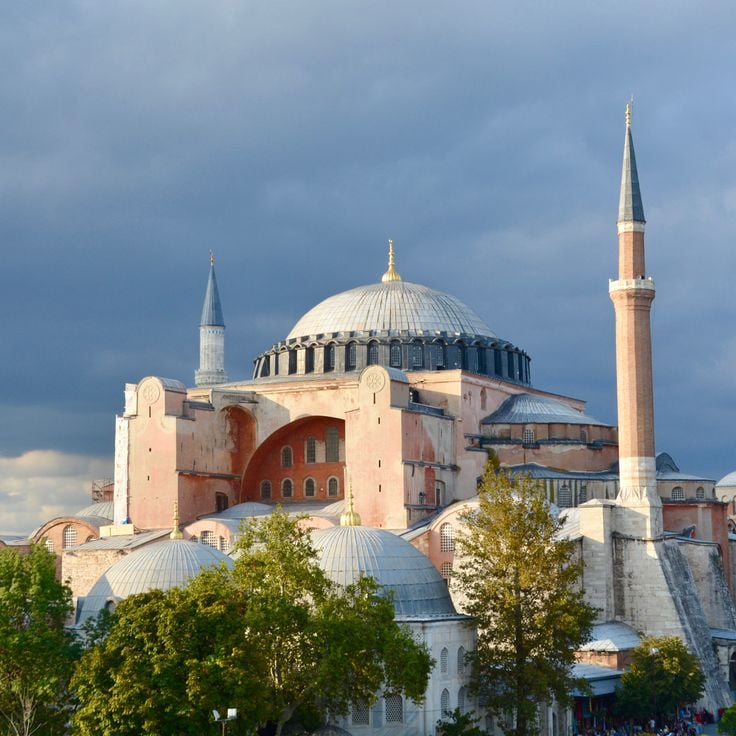
Istanbul, Turkey
The Hagia Sophia was constructed in the sixth century under Emperor Justinian I as a Byzantine cathedral and served as the principal church of the Byzantine Empire for nearly a thousand years. Following the Ottoman conquest of Constantinople in 1453, the building was converted into a mosque, with the addition of minarets, a mihrab, and Islamic calligraphy. The central dome, measuring 31 meters in diameter, rises 55 meters above the ground and rests on four massive piers connected by pendentives, a construction technique that was groundbreaking for its time. The interior contains Byzantine mosaics dating from the ninth to twelfth centuries depicting Christian scenes, alongside Ottoman decorative elements. Today, the Hagia Sophia functions as both a museum and a mosque, documenting the architectural and religious history of two major empires.

Plano, Illinois, USA
The Farnsworth House was designed by Ludwig Mies van der Rohe in 1951 and stands on eight steel columns that elevate it 1.6 meters above the Fox River floodplain. The structure consists of a rectangular steel frame with floor-to-ceiling glass panels on all sides, providing unobstructed views of the surrounding river landscape. The building features an open floor plan of approximately 140 square meters and demonstrates the principles of modern architecture through its reduction to essential elements.
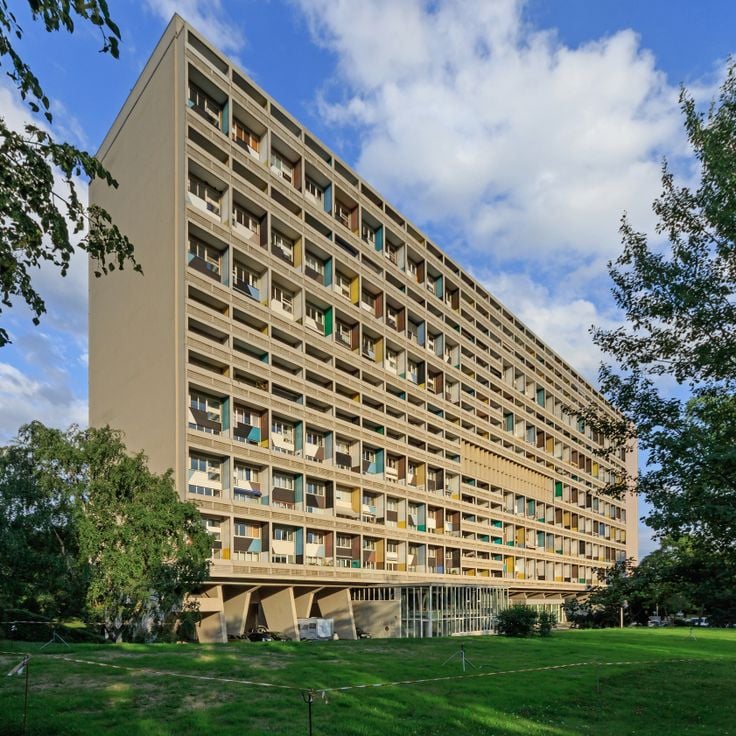
Marseille, France
The Unité d'Habitation is a residential building in Marseille completed in 1952 according to designs by Le Corbusier. The 18-storey structure contains 337 apartments and was constructed following the proportions of the Modulor system, a measurement system developed by the architect based on human body dimensions and the golden ratio. The building stands on massive support pillars and incorporates shops, a rooftop terrace, and communal facilities. The structure represents a significant example of Brutalist architecture and 20th-century modern design.

Brno, Czech Republic
Villa Tugendhat was designed in 1930 by architect Ludwig Mies van der Rohe for the married couple Grete and Fritz Tugendhat. This three-story residence stands as a principal example of the International Style and modernist movement in architecture. The construction employs a steel frame structure that allowed for the creation of interior spaces without load-bearing walls. The main living area on the first floor features a flowing, open floor plan that connects living, dining, and study zones. A semi-transparent onyx wall serves as a spatial divider, creating distinct areas within the large room. Floor-to-ceiling windows and retractable glass walls open the interior space to the garden.
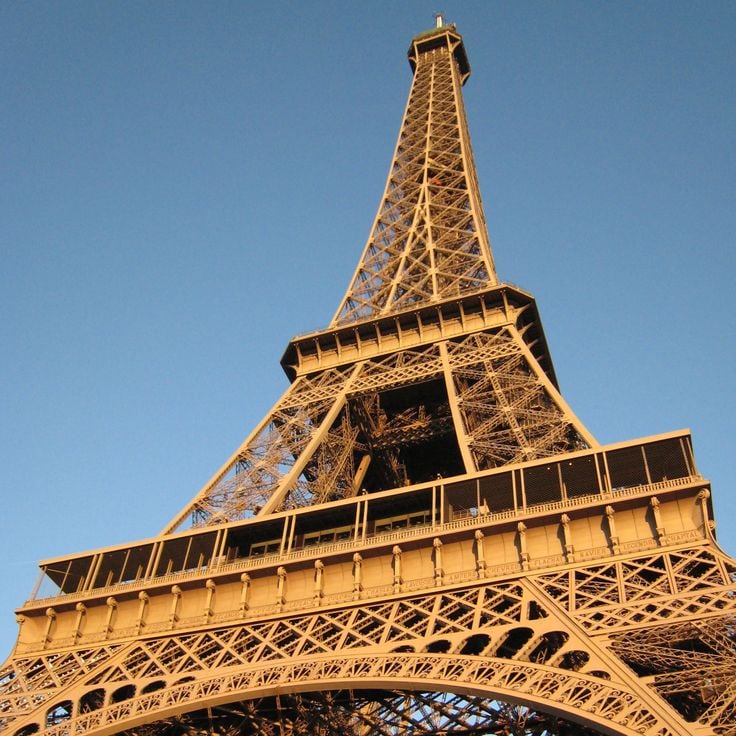
Paris, France
The Eiffel Tower was constructed between 1887 and 1889 by Gustave Eiffel as a temporary monument for the World Exhibition. The iron lattice structure rises 324 meters and weighs 7,300 tons. The tower comprises 18,000 metal parts joined by 2.5 million rivets. Three observation platforms provide views across the French capital. The structure evolved from a controversial exhibition piece to become the defining symbol of Paris.
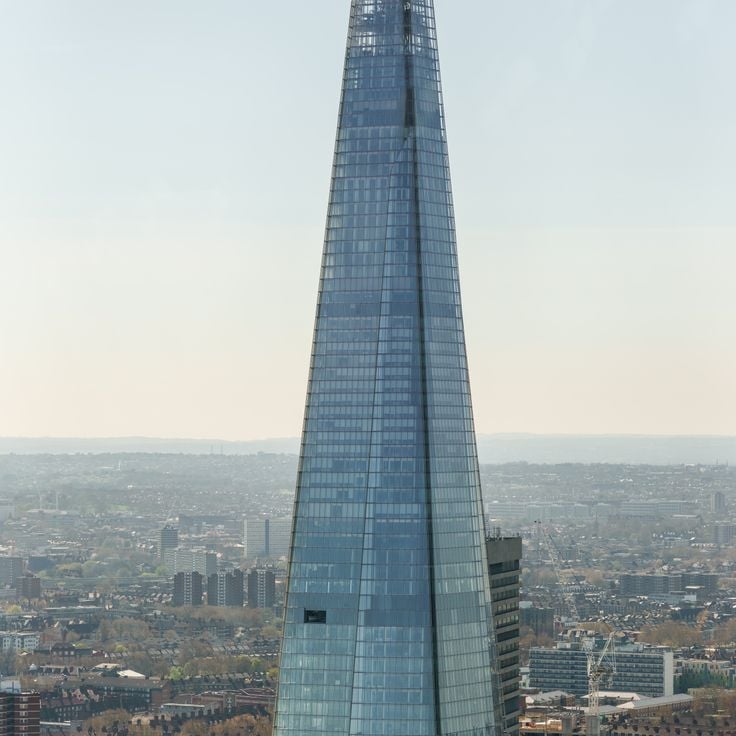
London, United Kingdom
The Shard is a 310-meter tall skyscraper with 95 floors located in central London. The glass facade comprises 11,000 individual panels that form the building's distinctive pyramidal silhouette. Completed in 2012, the tower houses offices, restaurants, a hotel, and a public viewing platform on its upper levels.
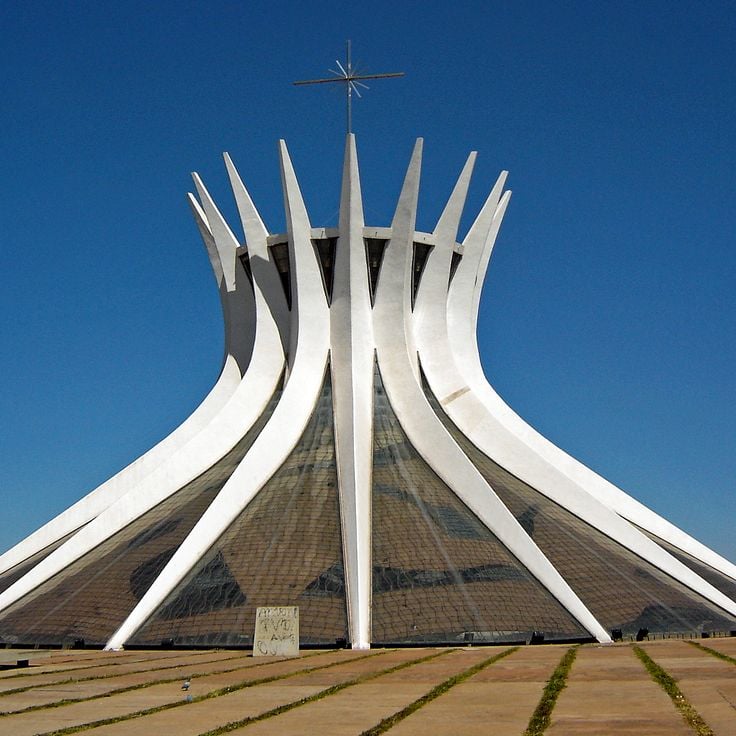
Brasília, Brazil
The Metropolitan Cathedral of Brasília was built between 1958 and 1970 following designs by Oscar Niemeyer. The hyperboloid structure consists of 16 curved concrete columns that open upward to form a crown. The building reaches a height of 40 meters. Glass panels inserted between the concrete columns allow natural light to flood the interior space. The underground entrance leads visitors through a dark passage into the illuminated nave.
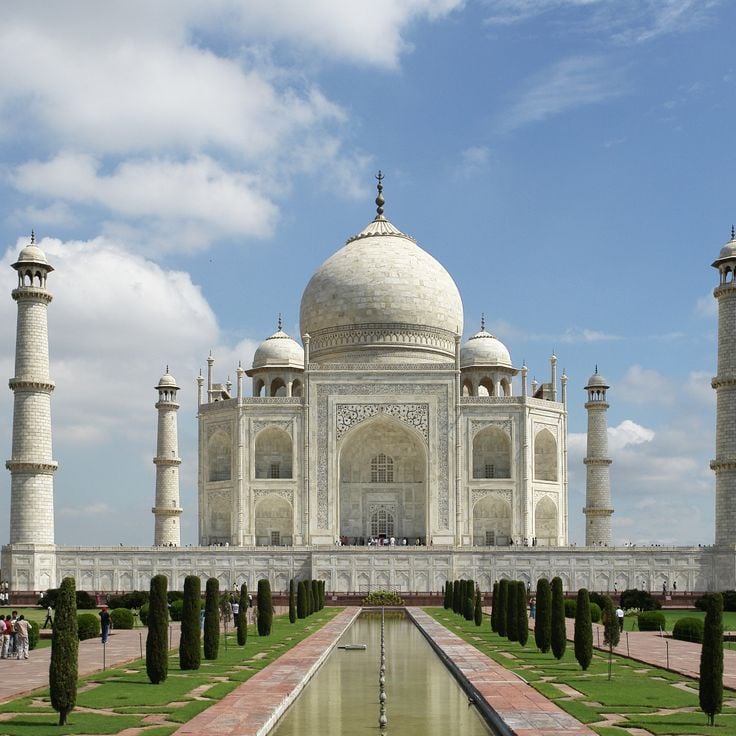
Agra, India
The Taj Mahal is a white marble mausoleum constructed between 1632 and 1653 on the southern bank of the Yamuna River. Mughal emperor Shah Jahan commissioned this monument in memory of his wife Mumtaz Mahal, who died during childbirth of their fourteenth child. The structure combines Persian, Indian and Islamic architectural elements and includes the main tomb, a mosque, a guesthouse, and extensive gardens with water features and fountains.

Singapore
Marina Bay Sands comprises three towers, each rising 55 stories, linked by a 340-meter platform that spans across their tops. Architect Moshe Safdie designed this integrated resort, which features an infinity pool positioned on the elevated platform. The complex includes hotel accommodations, a casino, convention facilities, theaters, and retail spaces. The rooftop platform extends beyond the tower edges, creating one of the defining features of this structure.
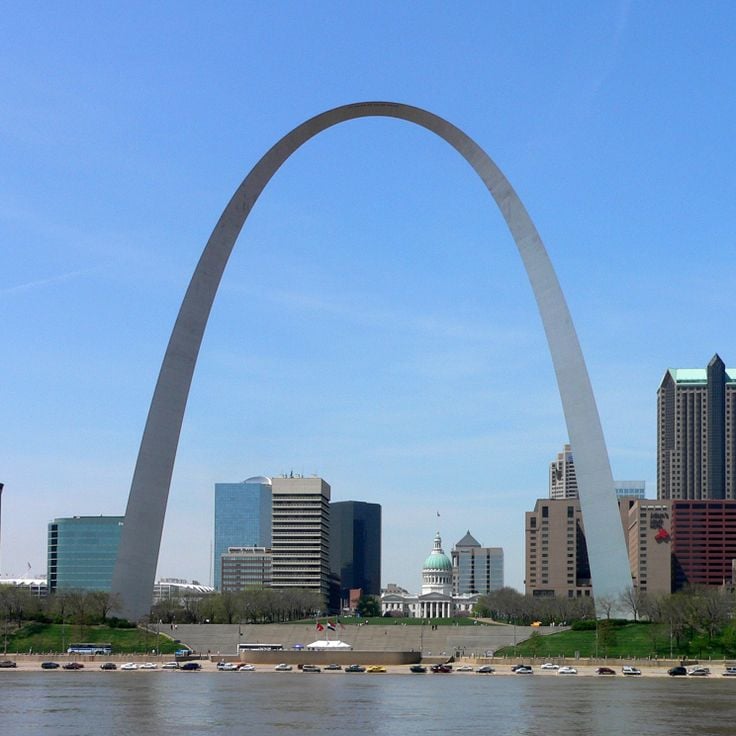
St. Louis, Missouri, United States
The Gateway Arch rises 192 meters above the western bank of the Mississippi River, forming the central monument of Gateway Arch National Park. The stainless steel construction was built between 1963 and 1965 following designs by architect Eero Saarinen. The arch symbolizes the role of St. Louis as a gateway to the American West during the 19th-century expansion. Visitors can access the observation platform at the top through an internal tram system.

Pisa, Italy
The Leaning Tower of Pisa is a freestanding bell tower constructed from white marble, serving the cathedral of Pisa. The structure rises through eight stories to reach a height of 56 meters. Construction began in the 12th century, and the tower started tilting during building work due to soft clay and sand beneath the foundation. Today the tower leans at approximately four degrees from vertical. Inside, a spiral staircase with 294 steps leads to the bell chamber, which houses seven historic bells.
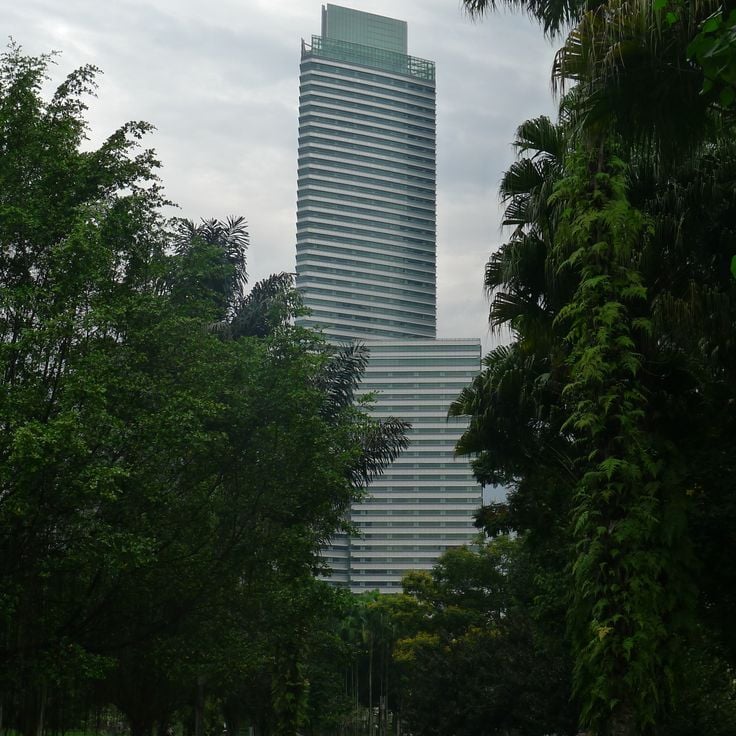
Kuala Lumpur, Malaysia
The Petronas Towers rise 452 meters above central Kuala Lumpur and consist of two identical towers connected by a double-level skybridge on floors 41 and 42. The construction combines reinforced concrete with a facade of glass and steel. Each tower contains 88 floors and was designed following Islamic geometric principles, with a floor plan based on an eight-pointed star pattern. The towers served as the tallest buildings in the world from 1998 to 2004 and currently house offices, a concert hall, and a shopping center.
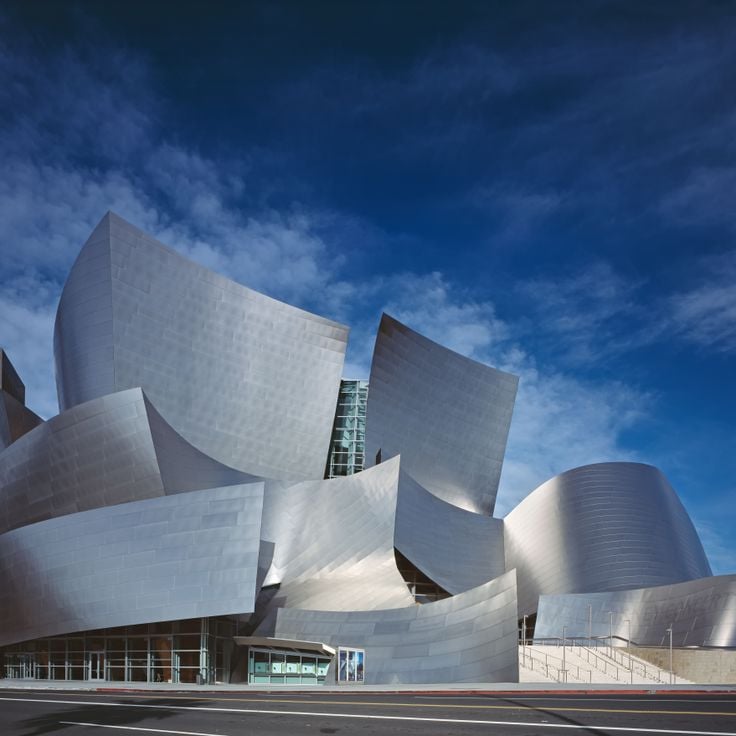
Los Angeles, USA
The Walt Disney Concert Hall in Los Angeles opened in 2003 and accommodates 2265 seats. The building was designed by architect Frank Gehry. The exterior facade features curved stainless steel plates that give the structure its distinctive undulating appearance. The concert hall serves as home to the Los Angeles Philharmonic Orchestra.
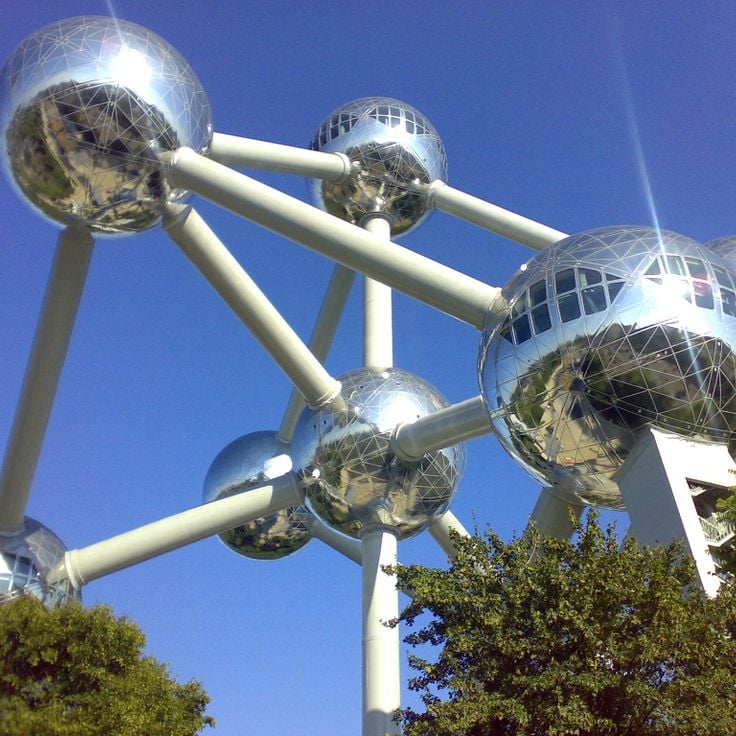
Brussels, Belgium
The Atomium was built in 1958 for the Brussels World's Fair and represents an iron crystal magnified 165 billion times. The nine spheres are connected by tubes containing escalators and elevators. Six of the spheres are accessible to visitors and house exhibition spaces, with a restaurant located in the top sphere. The steel construction underwent renovation between 2004 and 2006, during which the original aluminum cladding was replaced with stainless steel panels.
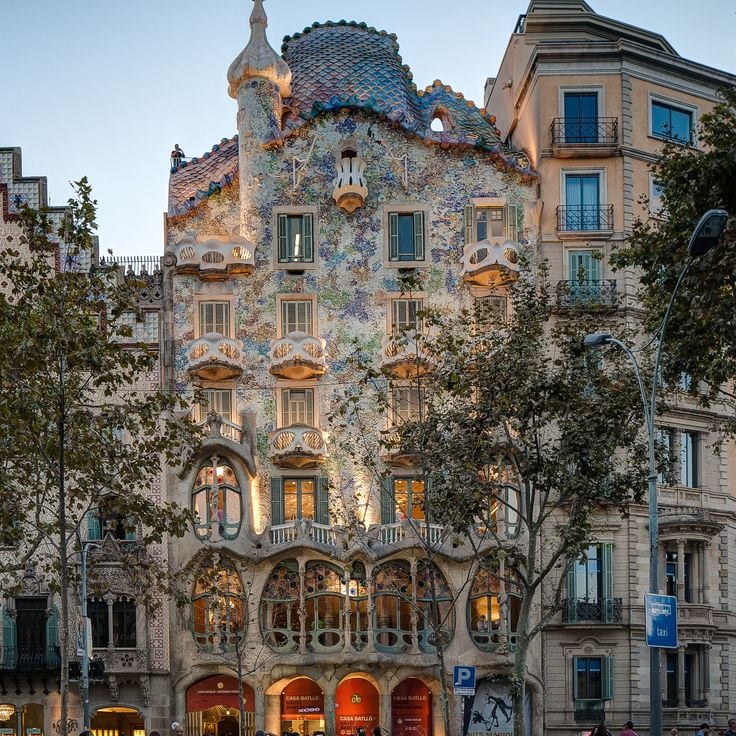
Barcelona, Spain
Casa Batlló is a residential building in central Barcelona that Antoni Gaudí remodeled between 1904 and 1906. The undulating stone facade features colorful ceramic mosaics and organic shapes throughout the interior demonstrate Gaudí's distinctive modernist style. The building includes curved walls, stained glass windows, and a roof designed to resemble a dragon's back. The rooms contain handcrafted details, woodwork, and innovative ventilation systems. Today the house operates as a museum, allowing visitors to experience Gaudí's architectural vision.
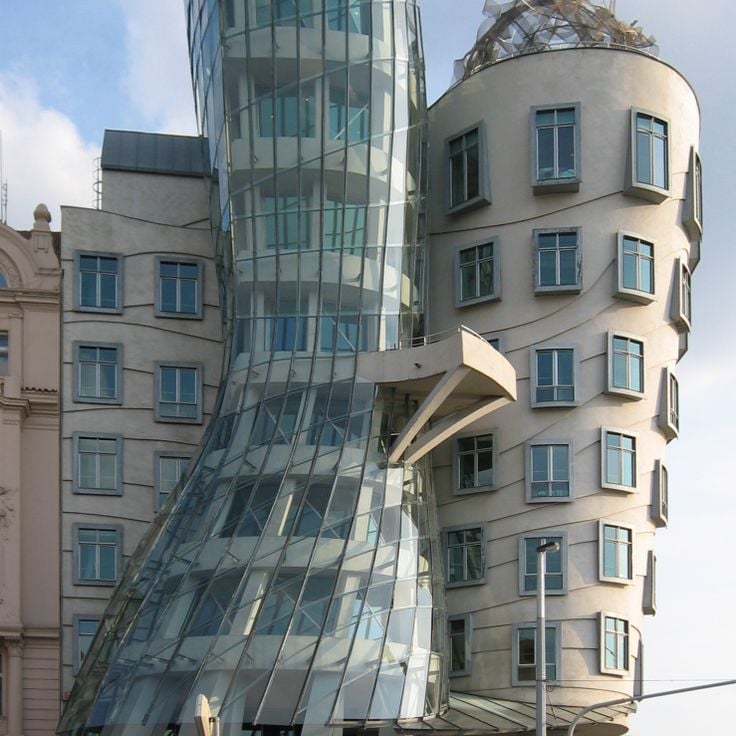
Prague
Non-traditional design was a subject of controversy, also known as 'Fred and Ginger', designed by Vlado Milunic together with Frank Gehry.
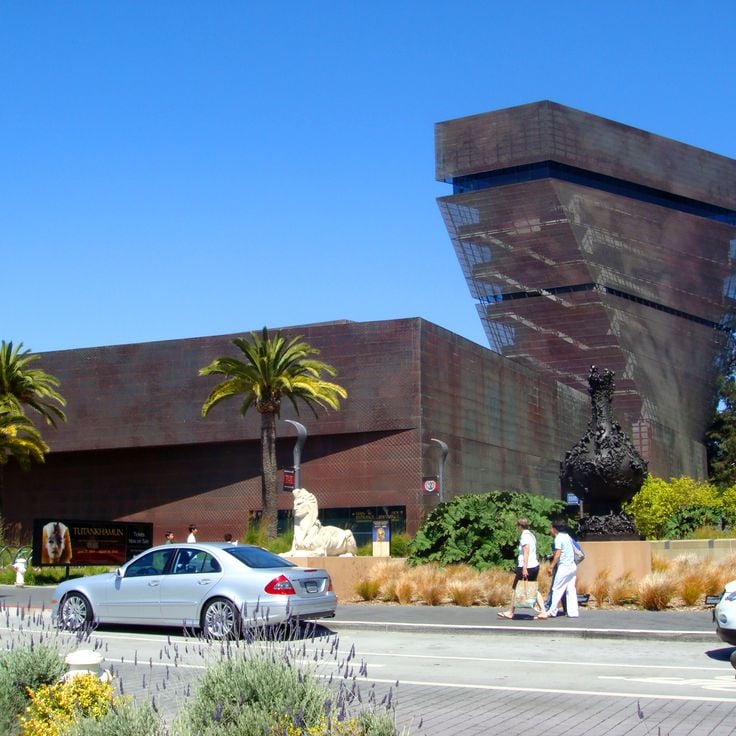
San Francisco, USA
The De Young Museum was designed by Swiss architects Herzog & de Meuron and opened in 2005, replacing the original 1895 structure damaged in the 1989 earthquake. The building in Golden Gate Park features a perforated copper facade that develops a natural patina over time, blending with the surrounding landscape. The museum houses a collection of over 27,000 artworks spanning American art from the 17th through 21st centuries, as well as international contemporary art, textiles, and works from Africa, Oceania, and the Americas. The 144-foot observation tower provides panoramic views of San Francisco and the bay area.

London, United Kingdom
The Barbican Estate is a residential complex built from exposed concrete in central London, completed in 1982. The development comprises 2113 residential units housed in tower blocks and terrace houses spread across 14 hectares. The complex includes the Barbican Centre for performing arts, an artificial lake, gardens, and a network of elevated pedestrian walkways connecting the various buildings. Designed by architects Chamberlin, Powell and Bon, the estate follows brutalist architectural principles and was developed in response to war damage in the City of London area.

Ronchamp, France
Notre Dame du Haut is a Roman Catholic pilgrimage chapel in Ronchamp, designed by architect Le Corbusier. Completed in 1955, this church was constructed on the foundations of a previous building destroyed during World War II. The structure features a sculptural concrete form with curved walls and an upward-curving roof. Irregularly placed window openings in the thick walls create distinctive lighting effects within the interior space. The chapel represents one of the most important works of modern religious architecture from the 20th century.